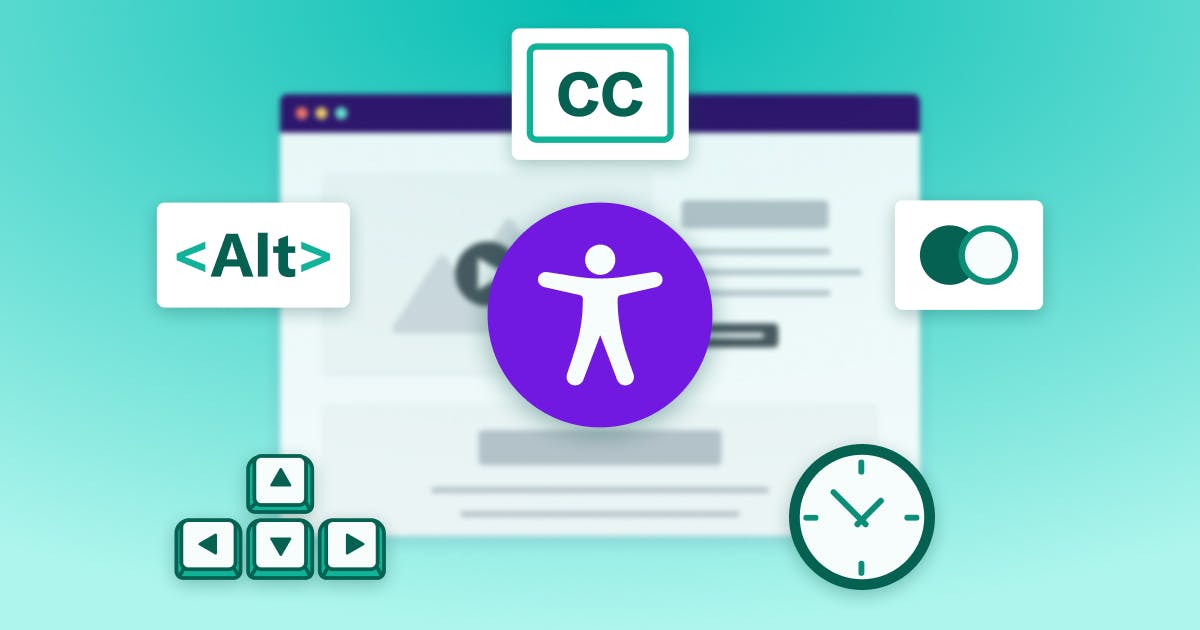2022 Was Another Record Year for Website Accessibility Lawsuits
2022 Was Another Record Year for Website Accessibility Lawsuits
.jpg?ixlib=gatsbyFP&auto=compress%2Cformat&fit=max&w=1160&h=609)
.jpg?ixlib=gatsbyFP&auto=compress%2Cformat&fit=max&w=1160&h=609)
Ready to see AudioEye in action?
Watch Demo
In this post, we examine the upward trend of website accessibility lawsuits and share tips on how to make your website ADA compliant.
As reported by Seyfarth Shaw LLP, plaintiffs in 2022 filed 3,255 website accessibility lawsuits in federal court alleging violations of the Americans with Disabilities Act (ADA) — a 12% increase from the previous record of 2,895 lawsuits set in 2021. It’s also important to note that the report doesn’t include lawsuits filed in state court.
For organizations of all sizes, this raises a pair of important questions:
- What is behind this rise in litigation?
- Is my organization at risk?
In this post, we break down the numbers in more detail, discuss some of the factors that could be contributing to this increase, and share tips on how to make your website ADA compliant.
Breaking Down the Numbers
According to Seyfarth Shaw, the vast majority of accessibility suits (2,560) filed in federal court were filed in New York, with Florida a distant second (310).
However, it’s worth noting that these numbers do not account for demand letters sent out by law firms that never result in lawsuits, as well as lawsuits filed in state courts that may be more difficult to track.
Indeed, according to one estimate, the number of demand letters increased from 40,000 in 2018 to more than 265,000 in 2020.
These letters typically list accessibility issues that a user encountered on the website — and can seek restitution in the form of tens of thousands of dollars.
Why Are Website Accessibility Lawsuits On the Rise?
Between 2019 and 2022, the number of website accessibility lawsuits filed in federal courts increased between 12 and 14% annually. And while it’s hard to say with certainty what is behind this uptick, there are several factors to consider:
- When the COVID-19 pandemic forced people to do more things online — whether it was shopping for groceries, scheduling a COVID-19 vaccination, or simply staying in touch with friends and family — it also highlighted the need for websites that were accessible to everyone.
- In March 2022, the Department of Justice (DOJ) published guidance reiterating its position that organizations have a responsibility to provide websites that are accessible for people with disabilities under Title III of the ADA.
- A number of high-profile accessibility lawsuits — like Domino’s Pizza, LLC v. Robles — have been settled recently, drawing attention to the link between digital accessibility and the ADA.
Whether these events are behind the increase or not, it’s reasonable to expect the number of lawsuits to continue rising — which makes it more important than ever to deliver an accessible user experience to every website visitor.
Want tips on how to make your website accessible to people with disabilities? Check out our Ultimate Guide to Accessible Web Design.
.jpg?ixlib=gatsbyFP&auto=compress%2Cformat&fit=max&w=1160&h=718)
Which Industries Are Most at Risk?
Based on AudioEye's aggregate data and public records, between 2020 and the first half of 2022, the four industries that received the most legal actions were retail (5,027), services (742), healthcare (298), and restaurants (292).
This closely follows AudioEye’s analysis of more than 3,500 websites across 22 industries, which found that 83% of e-commerce sites and 78% of healthcare sites had three or more severe accessibility issues, including the inability to view product descriptions, make a purchase, or book an appointment.
The more issues a website has (especially when they prevent visitors from completing key actions on a site), the more likely someone is to encounter an accessibility barrier they cannot get around — and take legal action.
How Does the ADA Determine Web Accessibility?
Because the ADA does not have technical standards for web accessibility, the DOJ recommends that businesses use the Web Content Accessibility Guidelines (WCAG) to evaluate the accessibility of their websites and digital content. Although it isn’t codified into law, past rulings have set WCAG 2.0 Level AA as the benchmark for web accessibility.
Published by the World Wide Web Consortium (W3C), WCAG 2.0 consists of 61 success criteria, which are written as pass-or-fail statements that address common accessibility issues like low-contrast text, missing or non-descriptive alt text, and keyboard accessibility issues.
WCAG 2.1 (which was released in June 2018) adds an additional 17 success criteria, for a total of 78 success criteria.
WCAG 2.2 (which was released in August 2023) removes 1 success criteria and adds an additional 9 success criteria, for a total of 86 success criteria.
Don’t Wait for an ADA Lawsuit to Think About Web Accessibility
If you’re ready to build digital accessibility into your organization, AudioEye can help. Our solution includes tools for testing WCAG conformance, automatically fixing common accessibility issues every time someone visits your website, and writing custom code fixes for issues that require human intervention.
Want to get a sense of where your website stands today? Get a free scan of any URL to uncover accessibility issues on your site.
Ready to see AudioEye in action?
Watch Demo
Ready to test your website for accessibility?
Share post
Topics:
Keep Reading

The Hidden Accessibility Violations in Online Documents
Hidden accessibility violations in PDFs can create major barriers for users with disabilities. Learn how to identify and fix common document accessibility issues to ensure compliance with accessibility laws.
accessibility
compliance
March 21, 2025

Introduction to Creating Accessible Web Content
Discover how to create digital content that’s accessible to individuals with disabilities. See how to stay compliant with accessibility laws and minimize legal risk.
accessibility
March 13, 2025

Accessibility Overlays: Definition, Challenges, Alternatives
Accessibility overlays hinder website experiences and pose legal risks. Here’s why you shouldn’t use them, and what to do instead.
accessibility
March 12, 2025
